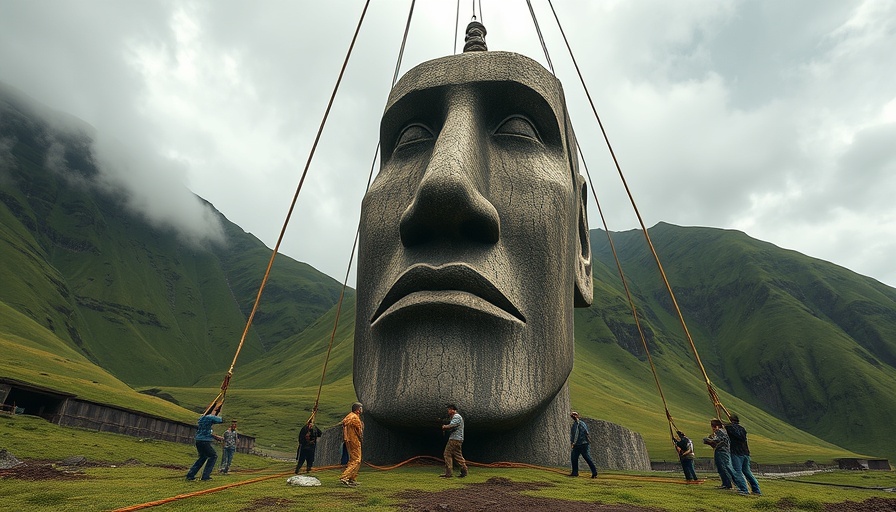
How Rapa Nui’s Moai Statues Truly Moved: The Amazing Discovery
For over 500 years, the question of how the monumental moai statues of Rapa Nui (Easter Island) were moved has baffled historians and archaeologists. Recent investigations led by Binghamton University have unlocked this mystery, revealing that the ancient inhabitants used an ingenious method that explains how these impressive structures could stand upright and 'walk' across the island. Through innovative use of 3D modeling and field experiments, researchers have confirmed that with the right design features and a clever technique, the moai could indeed ambulate.
3D Modeling Meets Ancient Engineering: The Process Unveiled
The study employs advanced 3D modeling to create detailed representations of nearly 1,000 individual moai statues, considering the unique characteristics that facilitate their movement. The team's lead researcher, Professor Carl Lipo, emphasizes that this venture into physics and engineering wasn't merely theoretical; it involved practical experimentation. By constructing a 4.35-ton replica of one of the statues, the team was able to successfully transport the moai over a distance of 100 meters using just 18 people, which underscores the efficacy of the moai's design—a feature that included a notable forward lean and a D-shaped base.
Significance of Roadways in the Movement
One of the standout findings from this research pertains to the roads on Rapa Nui. These paths were designed with a concave shape, which helped to support the statues as they were moved. The construction of these specific types of roads appears to have been crucial for the successful transportation of the moai. As the team noted, this indicates that the ancient islanders didn’t just create roads for travel; they actively engineered them to facilitate the movement of their monumental creations.
Challenging Previous Theories and Opening New Questions
This fresh perspective challenges the longstanding notion that the moai were slid on sleds or transported lying down. By demonstrating that the statues could indeed walk upright, Lipo’s research encourages further scrutiny of other historical assumptions regarding the Rapa Nui culture. As Lipo put it, “The challenge to anyone else is to prove them wrong. Find some evidence that shows it couldn't be walking.” This kind of spirited inquiry not only celebrates the ingenuity of the Rapa Nui people but also sets the stage for ongoing research and discussion surrounding their enigmatic culture.
Global Impact and Significance: Lessons From Rapa Nui
The implications of this research extend beyond archaeology; it raises broader questions about the resourcefulness and adaptability of ancient cultures. Just as the Rapa Nui found innovative solutions to monumental challenges, modern societies can draw lessons about problem-solving, sustainability, and creativity when faced with their own challenges. In a world grappling with rapid technological and environmental shifts, the story of the moai serves as an inspirational testament to human ingenuity.
Conclusion: Celebrating Ancient Ingenuity
The findings regarding the moai statues highlight the intelligence and ability of the people of Rapa Nui. Understanding these remarkable feats not only enriches our knowledge of history but also inspires us to appreciate the complex interplay of innovation within human societies. As we continue to explore the echoes of the past, the story of the walking moai remains a powerful reminder of what can be accomplished with creativity, teamwork, and engineering prowess.
In closing, there is much to be learned from the ancient practices of Rapa Nui's inhabitants. These insights can inspire contemporary discussions surrounding living sustainably, recognizing the significance of craftsmanship, and cherishing the rich culture that these statues represent. The journey of the moai is a celebration of heritage that connects the past to our present, reminding us of the endless possibilities when we harness our creativity.
 Add Element
Add Element  Add Row
Add Row 



Write A Comment